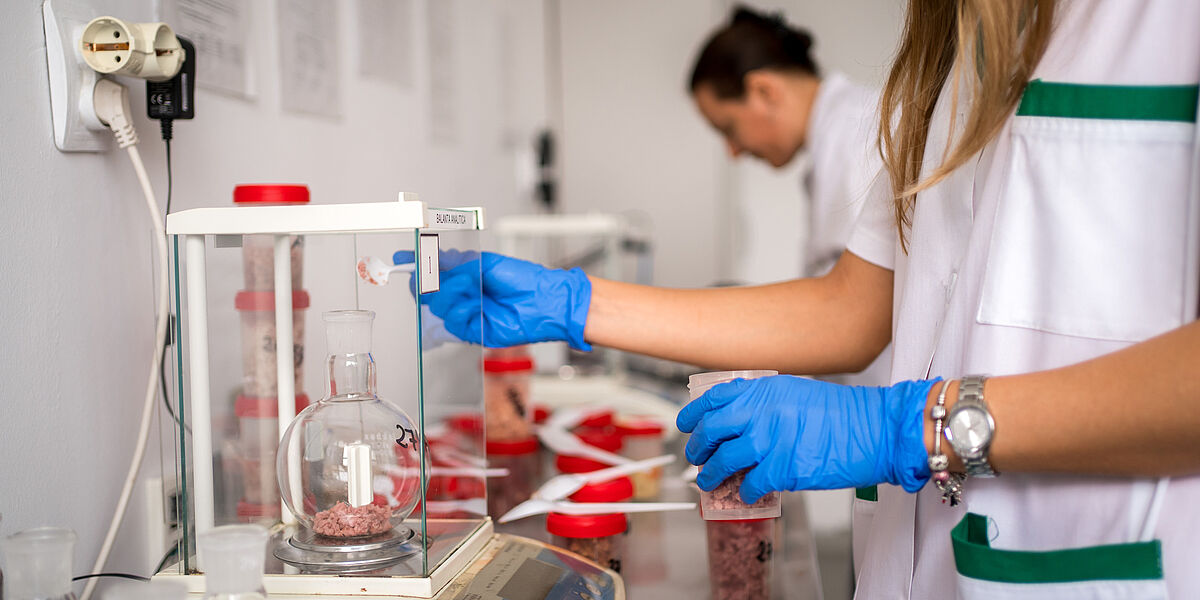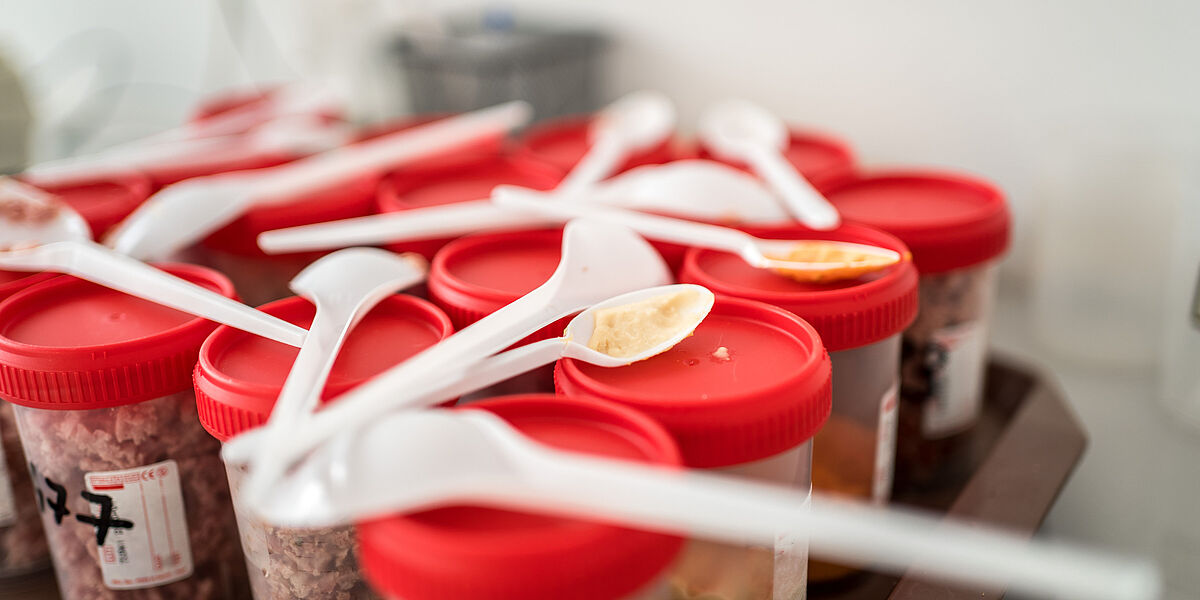Why does summer increase the risk of food poisoning? The importance of food testing in the laboratory
All foods degrade in a longer or shorter period of time from the date of manufacture or preparation, losing their original characteristics, thus becoming unfit for consumption and even dangerous to human health and life.

Food degradation can have various consequences on their qualitative and nutritional properties, as well as on the health of consumers.
Temperature fundamentally affects the reaction rate of chemical and biological processes, so the decomposition of food ingredients depends on temperature. Microorganisms tend to multiply better in heat. Food may be contaminated with pathogenic micro-organisms or toxic substances from various sources with which they come into contact during production, transport, storage or preparation.
In order to prevent food spoilage caused by biological factors (microorganisms and enzymes), it is necessary to act on the factors that favor their activity, namely: temperature, pH, the presence of water, the presence of oxygen.
In food processing and storage, temperature and hygiene play a key role
Here are some of the hazards that can occur during food processing:
- Food is insufficiently frozen or heated
- Cooked food is kept too long without being frozen
- Freezing systems are overloaded. The outcome? The temperature is too high
- Insufficient attention paid to the personal hygiene of employees
- “Clean” and “dirty” processes are not well separated enough
- Raw and heated foods are stored together
- Thawing liquid comes in contact with other foods
Due to these hazards, the appearance and multiplication of germs becomes imminent. The term "germ" refers to microorganisms capable of reproducing. They can only

Food storage conditions and increasing their shelf life
Any perishable food (with a short shelf life: milk and fresh milk products, meat and meat products, raw vegetables and fruits, cakes, ice cream) must be kept at temperatures between 0 and + 4ºC, ie in the refrigerator. For longer storage, perishable foods (except milk, fresh milk products, cakes, eggs) are kept in the freezer at temperatures below -18ºC.
Refrigeration does not destroy microorganisms, but only slows down their activity. Refrigeration prevents the formation of toxins by facultative pathogenic bacteria, preventing the occurrence of food poisoning due to food consumption.
Different refrigeration temperatures have been defined for fresh foods. Thus, the meat is kept at 0–4 ºC, the organs at 0–3 ºC, the minced meat at 0–2 ºC, the fish at 0–2 ºC, the dairy products at 2–6 ºC, depending on the manufacturer’s recommendations, the pasteurized milk at 2–4 ºC etc.
Freezing is the method of preservation that is also based on the use of temperatures below the minimum development of microorganisms, but located below the freezing point of products. Temperatures of -18 ºC are usually used. Freezing can destroy up to 60% of the microbial load of a food product. The rest of the microorganisms contained in the product remain viable and resume their activity as soon as the temperature rises in a favorable development zone.
At the opposite pole of the minimum temperature is the maximum temperature of development of microorganisms. Increasing the ambient temperature above the maximum temperature causes the death of microbial cells. Preservation methods such as sterilization and pasteurization are based on this principle.
In another form, similar effects can have boiling, frying, etc. Boiling, frying, baking, etc. they do not destroy all life forms of microorganisms present in food. Certain bacteria have the ability to proliferate as a form of resistance when they do not have favorable living conditions. After hot cooking of a food, it must either be cooled rapidly to temperatures below 8 ºC or kept warm (min. 65 ºC) until consumed.
Particularly important in alteration and the speed with which it occurs is the consistency of the environment. Thus, liquid media deteriorate much faster, on the one hand, because they have a high water content, and on the other hand, they contain soluble substances, the microbial cell coming into direct contact through its entire surface with the nutrients of food. This is all the more important as food contamination occurs mainly from external sources through the contact surface of food with microorganisms coming from the air. While the alteration of liquid products is done in their entire volume (total general alteration), in the case of solid, consistent media, more superficial is the superficial alteration, because the spread of microorganisms in the mass of products is limited by their consistency. Dehydration and drying have long been used as preservation techniques for fruits and vegetables for a long time.
What microorganisms frequently grow in food?
Microorganisms can be placed in the following sequence of ease with which they can alter: Molds> Yeasts> Bacteria (G-)> Bacteria (G +). Therefore, mold, as a spoilage, is the most common for all foods. Instead, bacterial alterations are less common and we find them only in nutritionally complex foods: milk, meat.
In foods that contain easily assimilable carbon sources (hexoses, disaccharides), microorganisms grow faster because they are the best sources of energy. Because the accumulation of acids accumulates in the metabolism of these sources, the environment is especially favorable for yeasts that alter through fermentation processes. If the hydrocarbon sources are complex (poliosis is present in food: starch, cellulose, glycogen), they can be degraded only by those microorganisms that produce extracellular enzymes capable of hydrolyzing these sources to simple, assimilable compounds. Thus the alteration of these products takes place mainly under the action of molds. In protein-rich foods, microorganisms that have protolytic activity, especially bacteria, are active, and the products resulting from these proteolysis (especially amino acids, peptides) are used by other groups of bacteria that eventually cause putrefaction.
In lipid-rich products will be able to grow microorganisms with lipolytic activity: bacteria Bacillus, Clostridium, Pseudomonas, yeasts of the genus Candida and many molds that alter high-fat products: butter, margarine, lard. In general, microorganisms that cause food spoilage are less demanding from a nutritional point of view. Most of them require the presence of growth factors in the product.
Why is important laboratory testing?
Performing microbiological tests in food has a very important role. According to the World Health Organization (WHO), a healthy diet is essential for better health and the optimal nutrients we need. A healthy diet protects us from many chronic diseases, such as cardiovascular disease, diabetes and cancer.
Laboratory tests are essential for food safety. Regarding food spoilage, the following essential tests are usually performed: the total number of germs in the food, which means the amount of all pathogens in units of volume or weight. Total germ limits have been established for some food groups and are verified by laboratory tests. Salmonella, Listeria Monocytogenes, Escherichia coli (E. coli), Enterobacteriaceae, Staphylococcus coagulase-positive. Microbiological testing of food is followed by testing of pathogens and bacteria.
The WESSLING Group has extremely efficient microbiological laboratories in the field of food safety. In the WESSLING laboratory in Bucharest, an excellent team of experts and the most modern equipment are part of WESSLING's support for food producers, raw material suppliers and traders.
You can find out more about food testing here https://ro.wessling-group.com/en/services/food/food-analysis

